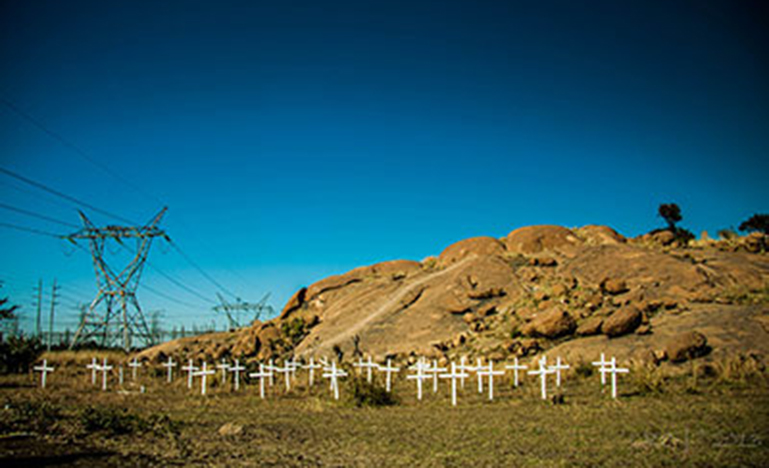Helping families of mineworkers killed at Marikana
South Africa presents unique legal and cultural context

On Aug. 16, 2012, in Marikana, a town to the northwest of Johannesburg, 34 protesting mineworkers were shot and killed, 78 were wounded and 250 arrested, all at the hands of the South African Police Service. The protest was the result of a wage dispute between Rock Drill Operators and management at Lonmin PLC mine.
President Jacob Zuma, in response to international reports comparing the SAPS’ actions to apartheid-era massacres, called the next day for a commission of inquiry.
I watched the footage on television in Toronto while packing for my trip to Johannesburg – part of the Canadian Bar Association’s Young Lawyers International Program, which sends Canadian lawyers to work with legal human rights organizations in developing countries. I arrived two weeks later, just in time to sit among the crowd of mineworkers in Marikana as leaders announced their successful wage increase to what was termed a “living wage” of Rand 12,500 (approximately $1,250 CDN).
I spent the next year assisting the Constitutional Litigation Unit of the Legal Resources Centre in its representation of families of mineworkers killed at Marikana.
Various aspects of the incident heightened international scrutiny, including claims that the mineworkers had been shot in the back by assault rifles and shotguns, many at short range, while running away from the police. Claims of collusion between the National Union of Mineworkers, Lonmin PLC and the government also surfaced. Reports of the socio-economic conditions of the miners living in the area were troubling; so too is the lack of benefits provided to the community whose land is being mined.
Legal counsel for the 15 parties with standing at the Commission, including ourselves, moved to Rustenburg to attend the daily hearings. Within a year, the Commission had amassed over 15,000 pages of documents as well as more than 150 hours of video footage. The search for the truth has been fraught with countless barriers such as reports of the police withholding and distorting evidence and a lack of funding for the victims’ representatives. Meanwhile, the situation at the Marikana mine became increasingly volatile with violence between rival trade unions and worker protests. Within that same year, six people who had been present at the Aug. 16 protest had committed suicide and three potential witnesses had been assassinated.
In South Africa, I was exposed not only to the intricacies of a new legal system, but also to a unique social and political context. Most of my time was spent assisting Advocate George Bizos SC, our team’s senior counsel, as he prepared for lengthy cross-examinations of police witnesses. Bizos is one of the most renowned human rights lawyers in South Africa. He acted as counsel for the late Nelson Mandela during the Rivonia Trial, and was a member of the committee entrusted with the drafting of the country’s constitution.
Mandela’s passing in early December underscores the need for the Commission’s findings and recommendations to embody the essence of truth, restoration and justice. The proceedings may indeed determine the direction and effectiveness of justice in South Africa in the years ahead.


